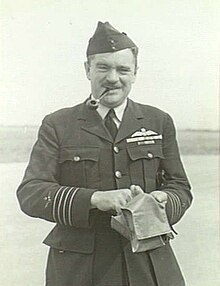Francis William Fellowes Lukis | |
|---|---|
 Group Captain Frank Lukis during World War II | |
| Nickname(s) | "Luke" |
| Born | 27 July 1896 Balingup, Western Australia |
| Died | 18 February 1966 (aged 69) Melbourne |
| Allegiance | Australia |
| Service | Royal Australian Air Force |
| Years of service | 1914–46 |
| Rank | Air Commodore |
| Unit | No. 1 Squadron AFC (1917–18) |
| Commands | No. 3 Squadron (1925–30) No. 1 Squadron (1930, 1932–34) No. 1 Aircraft Depot (1936–38) RAAF Station Laverton (1939–41) Northern Area Command (1941–42) North-Eastern Area Command (1942) No. 9 Operational Group (1943–44) Northern Command (1944–45) No. 2 Training Group (1945) Eastern Area Command (1945–46) |
| Battles / wars |
|
| Awards | Commander of the Order of the British Empire Mentioned in Despatches (2) |
| Other work | Manager, ANA (1946–57) |
Air Commodore Francis William Fellowes (Frank) Lukis, CBE (27 July 1896 – 18 February 1966) was a senior commander in the Royal Australian Air Force (RAAF). A veteran of World War I, he first saw combat as a soldier in the Australian Imperial Force at Gallipoli. In 1917, Lukis transferred to the Australian Flying Corps and flew with No. 1 Squadron in the Middle East, where he was twice mentioned in despatches. A member of the Australian Air Corps following the war, he transferred to the fledgling RAAF in 1921, and became the first commanding officer of the newly re-formed No. 3 Squadron at RAAF Station Richmond, New South Wales, in 1925.
Lukis went on to lead No. 1 Squadron in the early 1930s, and was promoted to group captain in 1938. Appointed an Officer of the Order of the British Empire the same year, he was in charge of RAAF Station Laverton, Victoria, during the early years of World War II. He later held forward commands in the South West Pacific theatre, including Northern Area (later North-Eastern Area), for which he was appointed a Commander of the Order of the British Empire, and No. 9 Operational Group (later Northern Command). Lukis also served on the Air Board, the RAAF's controlling body, as Air Member for Personnel. After retirement from the Air Force in 1946, he became a manager with Australian National Airways, and was active in veterans' associations. He died in 1966 at the age of sixty-nine.